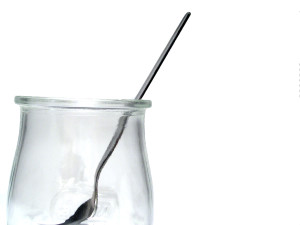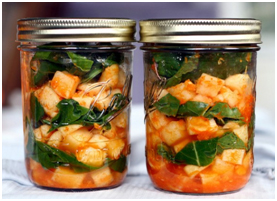Traditional Nutrition Philosophy | Dietary Hazards | Dietary Suggestions | Recipes
Traditional Nutrition Philosophy
 The diets that have stood the health test of time are those from traditional, non-industrialized cultures. These diets contain no refined or denatured foods; include some version of lacto-fermented foods and beverages; and are rich in supportive enzymes from raw foods. Although Traditional Nutrition Philosophy historically contains components of animal-based nutrition, we work to educate you on utilizing the conceptual components of Traditional Nutrition Philosophy with plant-based food sourcing. Many that visit Creative Care & Wellness Center are struggling with neurological disorders or chronic autoimmune diseases. At Creative Care & Wellness Center, we respect your unique genetic make-up and recognize unique nutritional needs. Our mission is to guide you in regaining functional health so that your soul may thrive.
The diets that have stood the health test of time are those from traditional, non-industrialized cultures. These diets contain no refined or denatured foods; include some version of lacto-fermented foods and beverages; and are rich in supportive enzymes from raw foods. Although Traditional Nutrition Philosophy historically contains components of animal-based nutrition, we work to educate you on utilizing the conceptual components of Traditional Nutrition Philosophy with plant-based food sourcing. Many that visit Creative Care & Wellness Center are struggling with neurological disorders or chronic autoimmune diseases. At Creative Care & Wellness Center, we respect your unique genetic make-up and recognize unique nutritional needs. Our mission is to guide you in regaining functional health so that your soul may thrive.
- The diets of healthy, non-industrialized cultures contain no refined sugar, corn syrup, white flour, or canned foods; no pasteurized, homogenized, skim, or low-fat milk; no refined or hydrogenated vegetable oils; no protein powders, artificial vitamins, or toxic additives and colorings
- When compared to the average American diet, traditional diets contain four times the minerals and water-soluble vitamins and ten times the fat-soluble vitamins.
- All traditional cultures consume a portion of their foods raw.
- Traditional diets have a high food enzyme content provided by raw foods, cold-pressed oils, unpasteurized wine and beer; and lacto-fermented vegetables, fruits, beverages, and condiments.
- Traditional cultures soak, sprout, ferment, or naturally leaven all seeds, grains, and nuts in order to neutralize naturally occurring anti-nutrients such as enzyme inhibitors, tannins, and phytic acid.
- Traditional diets contain nearly equal amounts of omega-6 and omega-3 essential fatty acids.
- Historically, all traditional cultures make use of homemade broths.
- Traditional cultures make provisions for the health of future generations by providing nutrient-rich foods for parents-to-be, pregnant women and growing children; and by teaching the principles of healthy diet to children.
Dietary Hazards – Avoid all of the following:
- Commercially processed foods – cookies, cakes, crackers, TV dinners, soft drinks, packaged mixes, etc.
- Refined sweeteners – sugar, dextrose, glucose, high fructose corn syrup and fruit juices.
- White flour, white flour products, and white rice.
- Hydrogenated or partially hydrogenated fats and oils.
- Refined vegetable oils – soy, corn, safflower, canola, or cottonseed.
- Polyunsaturated oils for cooking, sautéing, or baking.
- Imbalanced dietary vegetarian and veganism – Creative Care & Wellness Center seeks to educate components of nutrient-dense veganism
- Protein powders as they usually contain carcinogens formed during processing; and consumption of protein without the cofactors occurring in nature can lead to deficiencies, especially of the fat-soluble vitamins.
- Pasteurized milk, ultra-pasteurized milk products, low-fat milk, skim milk, powdered milk, or imitation milk products.
- Battery-produced eggs, factory-farmed meats and fish, processed luncheon meats, sausage, and hydrolyzed vegetable proteins.
- Quick-rise breads and extruded breakfast cereals – they block mineral absorption and cause intestinal distress.
- Canned, sprayed, waxed, irradiated, and genetically modified fruits and vegetables.
- Artificial sweeteners, food additives, and synthetic vitamins.
- Aluminum-containing foods, cookware or deodorants.
- Fluoridated water and distilled liquors
- Microwave ovens
Dietary Suggestions
- Consume whole, unprocessed foods.
- Use organic extra virgin olive oil, expeller-pressed flaxseed oil, and coconut oil.
- Consume organic fresh fruits and vegetables.
- Use whole grains, legumes, and nuts that have been prepared by sprouting, soaking, or sour leavening to neutralize phytic acid, enzyme inhibitors, and other anti-nutrients.
- Include lacto-fermented vegetables, fruits, beverages, and condiments in your diet on a regular basis.
- Prepare homemade broths.
- Use filtered water for cooking and drinking.
- Use unrefined sea salt, herbs, and spices for cooking – in stainless steel, cast iron, glass, or stoneware.
- Avoid sweeteners.
- Consume unpasteurized wine or beer in strict moderation with meals.
- Get plenty of sleep, exercise, and natural sunlight (avoiding sunscreens).
- Think positive thoughts.
- Practice forgiveness.
Recipes
Coconut Kefir
Kefir is an ancient cultured, enzyme-rich food that is similar to drinking-style yogurt. Not only does coconut kefir supply more probiotic bacteria than that found in yogurt, but it also contains beneficial yeast. The naturally occurring bacteria and yeast in kefir combine to balance intestinal flora and boost immunity. When taken regularly, kefir contributes to a healthy immune system,
 provides a tranquilizing effect on the nervous system, relieves intestinal disorders, and provides therapeutic nutrition. Kefir is capable of recolonizing the digestive tract, making it a better alternative to yogurt.
provides a tranquilizing effect on the nervous system, relieves intestinal disorders, and provides therapeutic nutrition. Kefir is capable of recolonizing the digestive tract, making it a better alternative to yogurt.
Kefir contains minerals and essential amino acids to assist the body in healing. Tryptophan, one of these essential amino acids, is also well known for its relaxing effect on the nervous system. This healthy nervous system effect can also be attributed to the high amounts of calcium and magnesium present.
Kefir is also rich in vitamin B1, biotin (B7), B12, and Vitamin K. These vitamins are responsible for numerous functions ranging from regulation of the kidneys, liver, and nervous systems to helping relieve skin disorders, boosting energy and promoting longevity. Finally, the phosphorus present in kefir helps the body utilize carbohydrates, fats, and proteins needed for cell growth and maintenance.
Making Kefir from Powder
1 package kefir powder
1-quart fresh (preferably raw) coconut waterMix together in a clean wide-mouthed jar, stir well, and cover jar tightly. Allow to sit approximately 24-48 hours at room temperature, until kefir thickens and reaches a tartness to your liking. To keep the culture going, pour about an inch of kefir into a clean half gallon jar, and fill the rest of the way with fresh coconut water and let sit out for about 24-48 hours.
Making Kefir from Grains
Approximately 1 rounded teaspoon of kefir grains
1-quart fresh (preferably raw) coconut waterPlace grains and coconut water in quart jar, cover tightly, and let sit about 24 hours. Strain the kefir and put the grains in a new quart jar with more coconut water to start a new batch. The grains will double in size in about two weeks. As they grow, the culture will start to ferment more quickly, so you will want to remove some of the grains or make a larger batch. Store extra grains in the fridge.
Consider the following link for an online source: http://bodyecology.com/digestive-health-kefirstarter.html
Kombucha
Kombucha is healthy beverage made by lacto-fermenting black tea, white sugar, and a Kombucha culture (also called a SCOBY – Symbiotic Colony of Bacteria and Yeast). The culture uses the sugar to produce valuable substances such as glucuronic acid, lactic acid, acetic acid, vitamins, amino acids, and more. Kombucha is a powerful liver detoxifier and immune system booster!
Making Kombucha Tea from a prepared culture
3 qts distilled water
1 C organic cane sugar
4 organic black tea bags
1 Kombucha culture
½ to ¾ cup starter from a pervious batchBring water to a boil. Add sugar and simmer until dissolved. Remove from heat; add tea bags, steep 30 minutes. Remove tea bags and cool quickly to room temperature to avoid unwanted molds from forming. Pour into wide-mouthed gallon jar, add mushroom and starter. Cover with cloth or paper towel secured with a rubber band, and put in a warm (70-90 degrees), quiet place for 10-14 days. Finished Kombucha will be mildly fizzy and slightly sweet, reminiscent of tart apple cider.
When Kombucha is finished fermenting, a second culture will have formed, which can be peeled away and given to a friend. If mold appears on the culture or the culture doesn’t reproduce, throw it away and start over with a new culture in a warmer brewing location.
Sauerkraut
Making Sauerkraut using the “Easy Jar” Method
2 lbs. shredded cabbage
1 T Celtic sea salt
Herbs or spices for flavoring as desiredPlace cabbage in a large bowl and sprinkle with sea salt. Beat cabbage to extract juices. Let stand for 30 min. to extract more of the cabbage juices. With clean hands, stuff mixture into a sterile wide-mouthed quart jar. Press down tightly until juices cover the top of cabbage, leaving one-inch of space from top of jar. Place a water-filled bag on top of the cabbage to keep cabbage submerged under brine. Cover tightly and ferment at 65-70 degrees for 3 days to 3 weeks, depending on desired taste. When finished fermenting, transfer to cold storage.
Soup and Broth
INGREDIENTS
- 12 cups filtered water
- 1 tbsp organic coconut oil or organic extra-virgin olive oil
- 1 red onion quartered (with skins)
- 1-2 garlic bulb(s) smashed
- 1 thumb-sized piece of ginger roughly chopped (with skin)
- 1-2 cups greens such as kale or spinach
- 3-4 cup mixed chopped vegetables and peelings: carrot peelings, red cabbage, fresh mushrooms, leeks and whatever else you have on hand
- 1/2 cup dried shiitake mushrooms
- 30 g dried wakame seaweed
- 1 tbsp peppercorns
- 2 tbsp ground turmeric
INSTRUCTIONS
- Place all ingredients into a large pot. Bring to a boil then simmer, with the lid on, for approximately one hour.
- Strain the liquid into a large bowl.
- Serve immediately.
- Season with Bragg’s Liquid Aminos® or sea salt for a salty taste.
Wellness Salad Dressing
1T Organic, Extra Virgin, Cold-pressed Olive Oil
1T Organic Flax Seed Oil
1 Clove Garlic, crushed
Juice of ½ Organic LemonWhisk together and season to taste with Bragg’s Liquid Aminos. Serve immediately.





